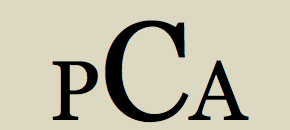Captured Rainwater and Reused Greywater Could Reduce Your EBMUD Bills
Piedmonters gathered in the Science classroom of Havens School to hear about water use and conservation opportunities in California and across the nation. Using rainwater and greywater instead of fresh drinking water for some tasks could lessen the strain on Piedmont’s sewer system and reduce EBMUD bills.
John Russell, a purveyor and installer of water storage systems, Clean Water Components, was invited to speak by CONNECT. According to Russell, it takes 1.1 million gallons of drinking water to produce the food consumed by an average family over a year. California agriculture uses drinking water sources for irrigation, in contrast to Texas, which is the national leader in rainwater harvesting, and midwestern farms, which rely largely on the vagaries of falling rainwater. The single greatest use of electricity in California is pumping water around the state. Yet every household continually throws away reusable water in manageable quantities that could be used in place of fresh drinking water for some domestic tasks.
Russell said the priority should be keeping piped-in drinking water and rainwater on site. The cleanest category of free on-site water is rainwater. It is potable after sterilization. With no treatment, it can be used for bathing, laundry or to flush toilets as well as landscape irrigation. Passive rainwater harvesting can be accomplished by shaping landscaping to catch, use, and move rainwater around plantings. Creating a rainwater garden mitigates storm water runoff, reducing the strain on the sewer system. (An audience member indicated that Piedmont’s sewer system “leaks like a sieve,” whenever there is significant storm water runoff.) Green streets also passively harvest storm water.
Russell pointed out that many uses of rainwater require storage. The simplest storage system is a barrel under the downspout with a leaf diverter above and a spigot on the bottom where a hose can be connected. Using gravity, any downhill landscape can be watered from the barrel with no need for pumps or electricity. A trap to shuttle aside leaves is mounted above the barrel since organic material would decompose in the water, compromising it, creating odors and requiring extensive frequent clean-outs that defeat the simplicity of the project. There are a variety of inexpensive barrels to use, including one that looks like terracotta and has a planter area on its lid. Many more elaborate systems can be installed involving pumps and above or underground cisterns holding up to tens of thousands of gallons.
In many ways greywater is a better alternative source than harvested rainwater for irrigation and flushing toilets. It is continually generated in appropriate quantities, which precludes the need for storage. Unlike rainwater that rarely falls in the Bay Area during 7 months of the year, greywater is available daily. It can be used with no filtering for flushing toilets. In most Piedmont homes the greatest use of fresh drinking water is for flushing toilets, a waste of a precious resource.
Russell explained that water contaminated by contact with food particles, human waste, chemicals or salts is black water. Greywater from clothes washing machines (except diaper loads), bathtubs and hand-washing sinks is usable despite lint, soaps, shampoos, cleansers, dirt, grease and oils from our bodies as long as the products used are “earth-friendly.” One person produces 20 – 40 gallons of greywater every day. Since greywater is very different from rainwater, it is necessary to be more careful with it. The simplest greywater reuse system is a pipe or hose to small perforated containers sunk in the garden with mulch packed around them to break down the additives.
At present the City of Piedmont does not allow any water retention on site. However, Piedmont will hold a hearing on this issue in January. California revamped its greywater law in August 2009. (Water Code Section 13050) California Greywater Standard chapter 16A Nonpotable Water Reuse Systems establishes minimum requirements for the installation of greywater systems. Chapter 16A was approved for addition to the 2007 California Plumbing Code by the California Building Standards Commission (CBSC) on July 30, 2009 and went into effect on August 4, 2009. 1603A Standards for Permit-Free Clothes Washer/ Single Fixture System stipulates that systems that meet the specified standards may be installed or altered without a permit or inspection. Although the new California standard is the culmination of an extensive stakeholder review process with extensive input from building officials, health officials, inspectors, industry and environmental representatives, some local jurisdictions are considering deviating from the new California greywater code.
This reporter is familiar with 19th century midwestern farmhouses which had huge cisterns instead of a basement. All the rain running off the roof was captured and fed into the cistern. The water was then pumped by hand upstairs for many uses. To see a contemporary system in a domestic setting, visit EcoHouse in Berkeley. It has both a greywater reuse system and rainwater harvesting with diagrams and explanations.
Reported by Susan Southworth


